Discover the Perfect Motor Grader Manual
Explore our compilation of the top 50 motor grader manuals on the [RL] platform.
Why are these Manuals Essential?
Motor grader manuals are indispensable tools for mechanics, technicians, and owners alike. They serve as a comprehensive guide to maintaining and repairing your machine. By following the instructions and guidelines in these manuals, users can:
- Enhance the longevity of their equipment.
- Ensure cost-efficient maintenance and repair.
- Guarantee that repairs are executed correctly.
Always Updated Listings
We refresh this list periodically, every 1-2 months, to provide the latest and most pertinent manual options.
Price Considerations
Manual prices are determined by individual sellers, not by the [RL] marketplace. Consequently, a manual might be priced differently by various sellers. We advise comparing prices before finalizing a purchase.
User Reviews and Feedback
Many of our listings feature reviews and ratings from prior users, found at the bottom of the detailed manual page. We encourage you to share your feedback post-purchase, assisting others in making informed decisions.
Preview Option
Some sellers enable our preview feature. Use this tool to ensure a satisfactory purchase experience.
Contacting Sellers
To reach out to a manual\'s seller, use our contact form. We\'ll either relay your query or address it ourselves.
FAQ - FREQUENTLY ASKED QUESTIONS
Is a physical copy of the manual available? : No, once your payment is processed, you can instantly download the manual.
Who provides these manuals? : [RL] marketplace only facilitates the platform and processes payments. The seller\'s name can be found on the specific manual\'s detail page.
Is the manual authentic and authorized? : [RL] exclusively offers original motor grader manuals utilized by professionals and repair shops.
What formats are the manuals available in? : Most of our manuals are in PDF format, but others might come in zip, exe, rar, and more.
Do you have manuals for every motor grader? : We boast an extensive collection of motor grader manuals, and our library is continuously expanding. Use our search bar to locate specific manuals.
What varieties of manuals can I find? : [RL] provides service manuals, shop guides, factory manuals, repair instructions, and a variety of handbooks.
Get Your Repair Manual Now
Don\'t delay in securing the repair manual you need. Enjoy a lifetime download guarantee, as detailed in our FAQs.
If our services met your expectations, kindly endorse us on social platforms and follow us on Facebook.
Motor Grader Manuals (5 total results)
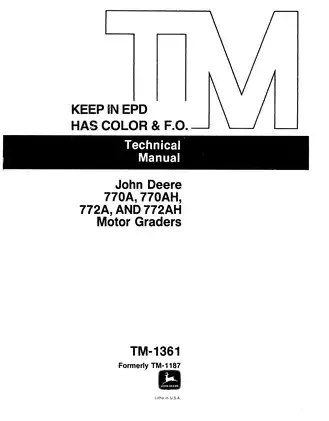
John Deere 770A 770AH 772A 772AH 1987 - Comprehensive Service & Repair Manual, TM-1361
- 770A (1987)
- 770AH (1987)
- 772A (1987)
- 772AH (1987)
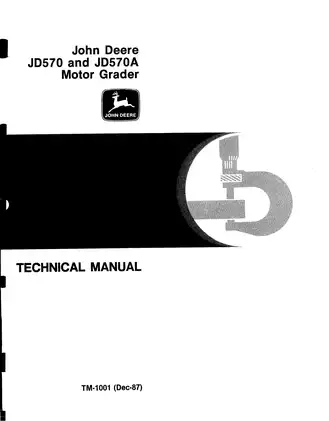
1987 John Deere JD570 / JD570A Grader - Authorized Service & Maintenance Manual
- John Deere JD570 / JD570A (Dec-87)
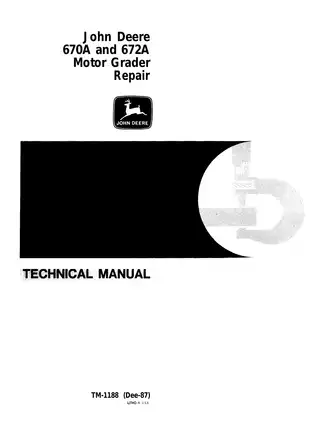
John Deere 670A, 672A 1987 - Precision Maintenance & Repair Manual for Motor Graders
- 670-A (1987)
- 672-A (1987)
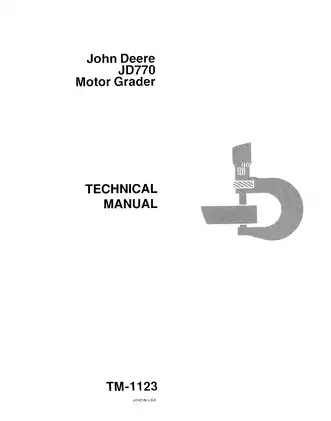
John Deere JD770 Motor Grader 1980 - Comprehensive Service & Repair Manual
- JD770 Motor Grader (1980 Model)
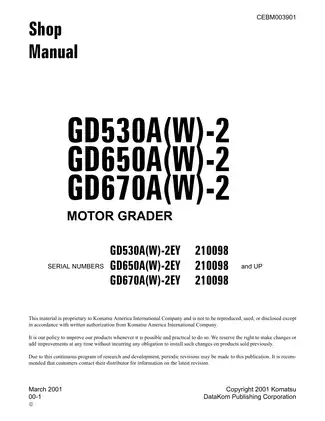
Komatsu shop manual for: GD530A-1-1E, GD530A-2A-2B-2C-2E, GD530AW-1, GD530AW-2A-2B-2E-2C, GD650A-1-2, GD650A-2A-2B-2E-2C, GD650AW-1, GD650AW-2A-2B-2E-2C, GD670A-1, GD670A-2A-2B-2E-2C, GD670AW-1
-
GD530A(W)-2
-
GD650A(W)-2
-
GD670A(W)-2
-
Komatsu GD530A-1-1E Motor Grader